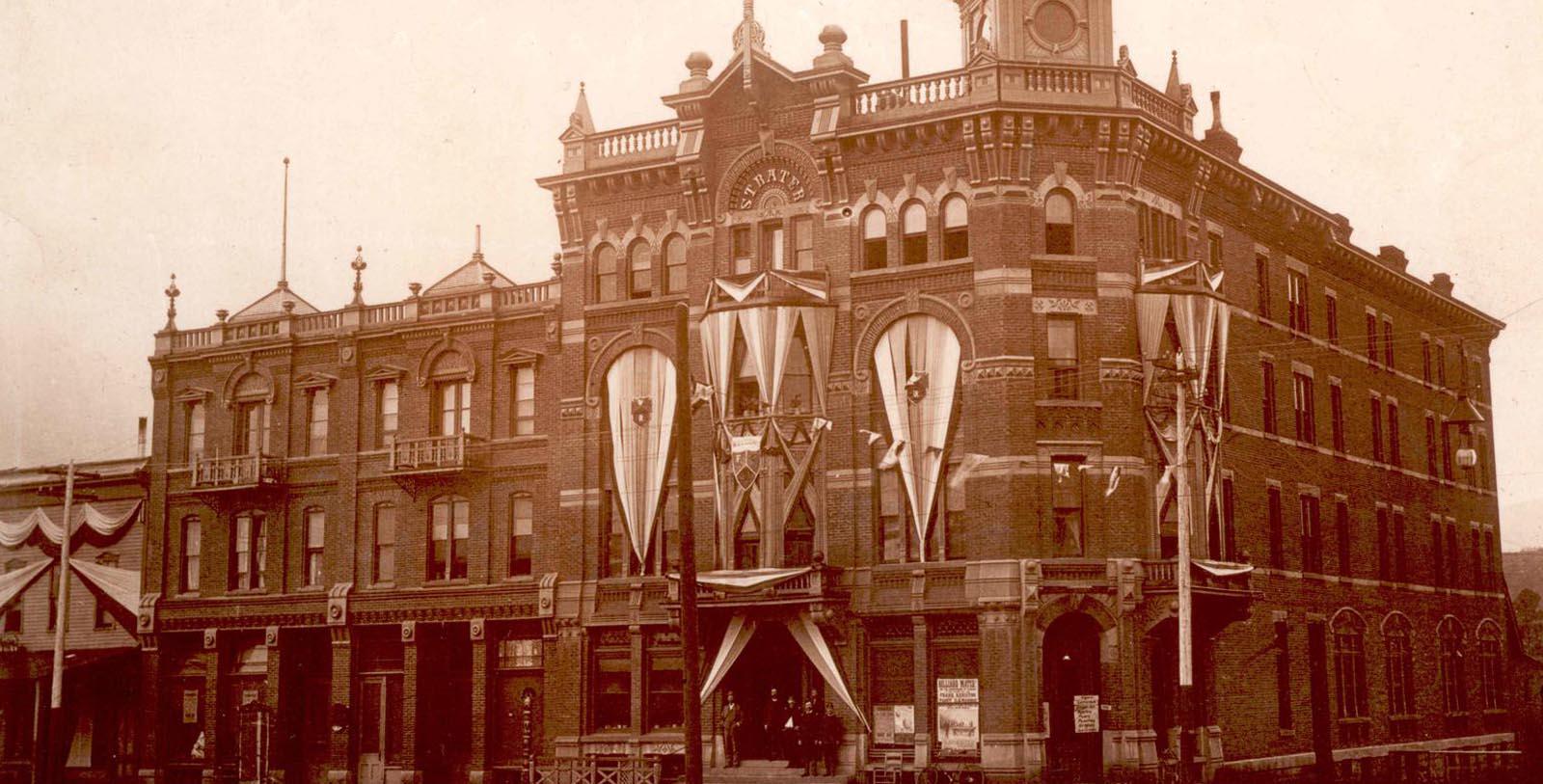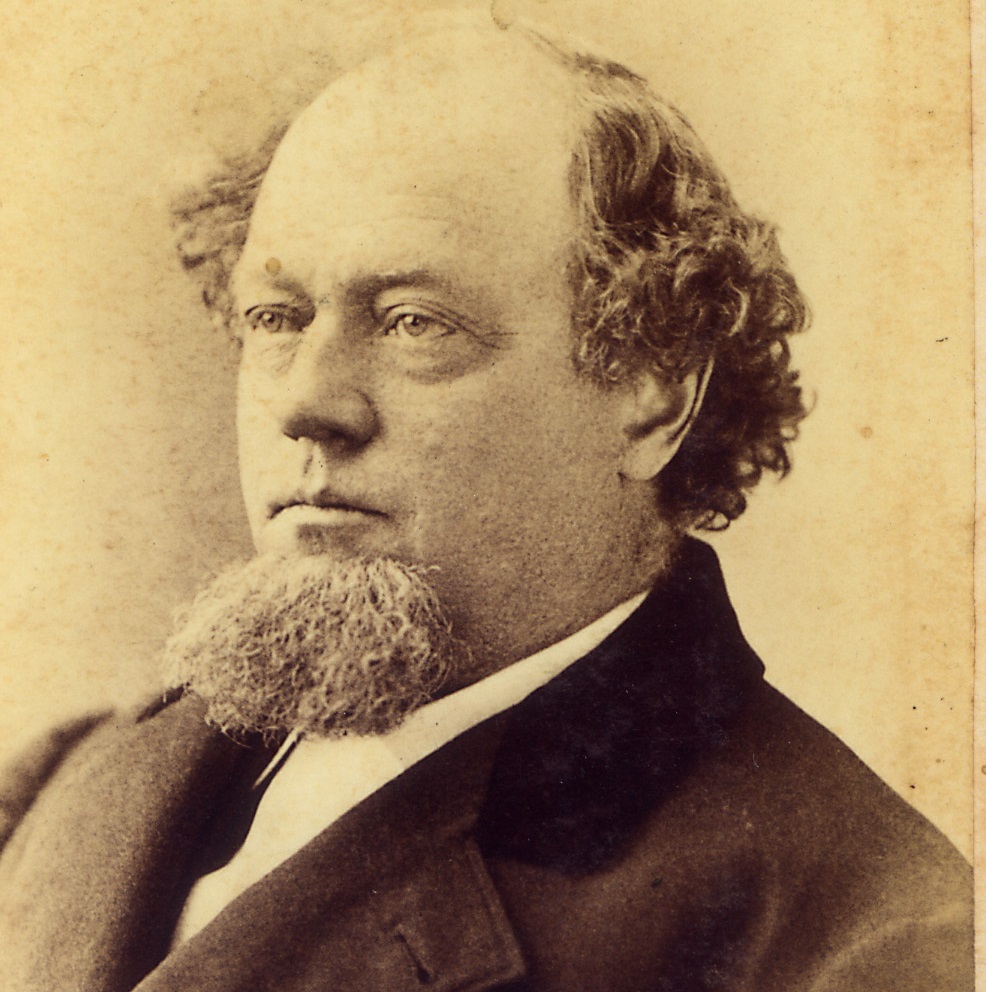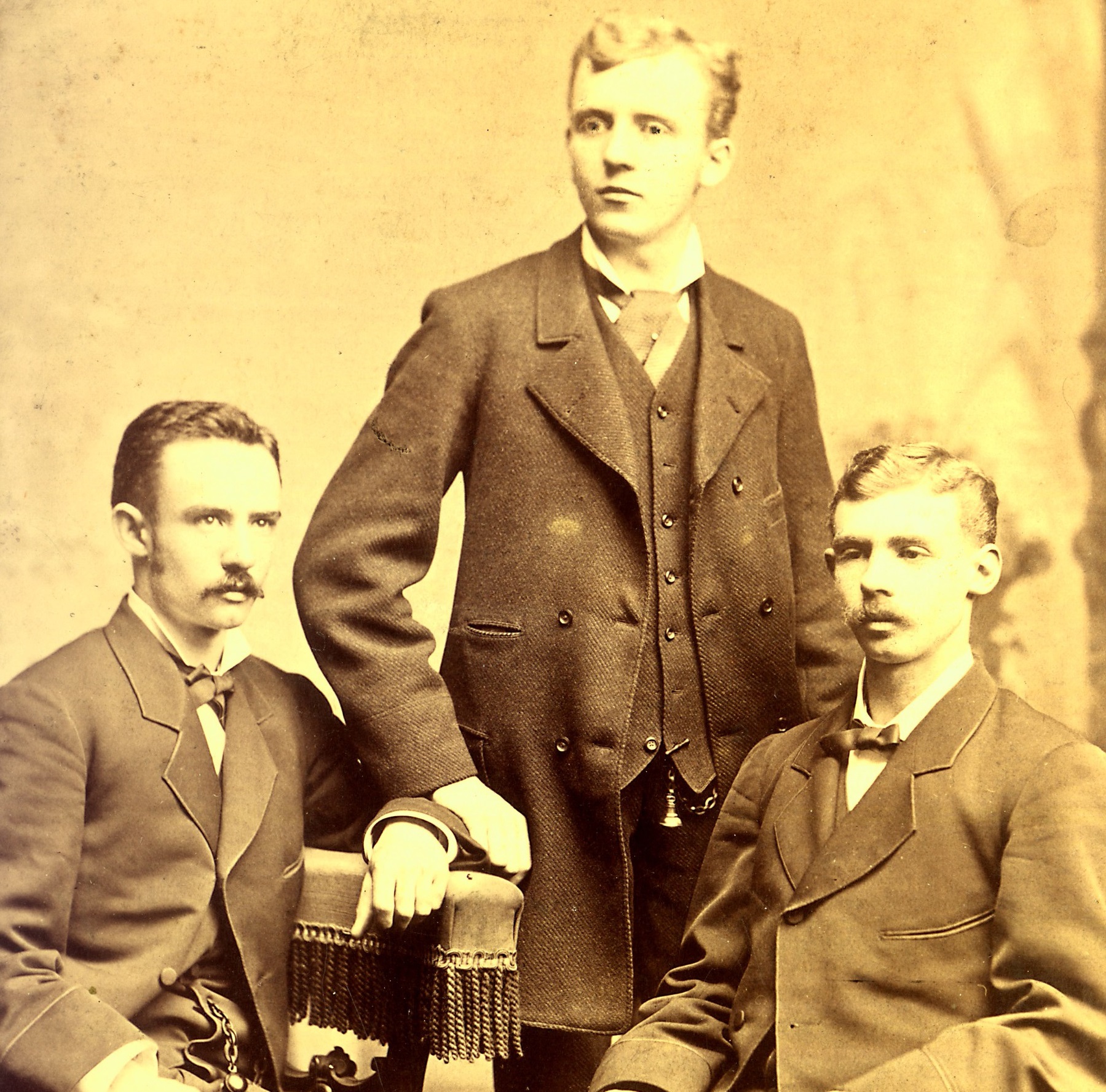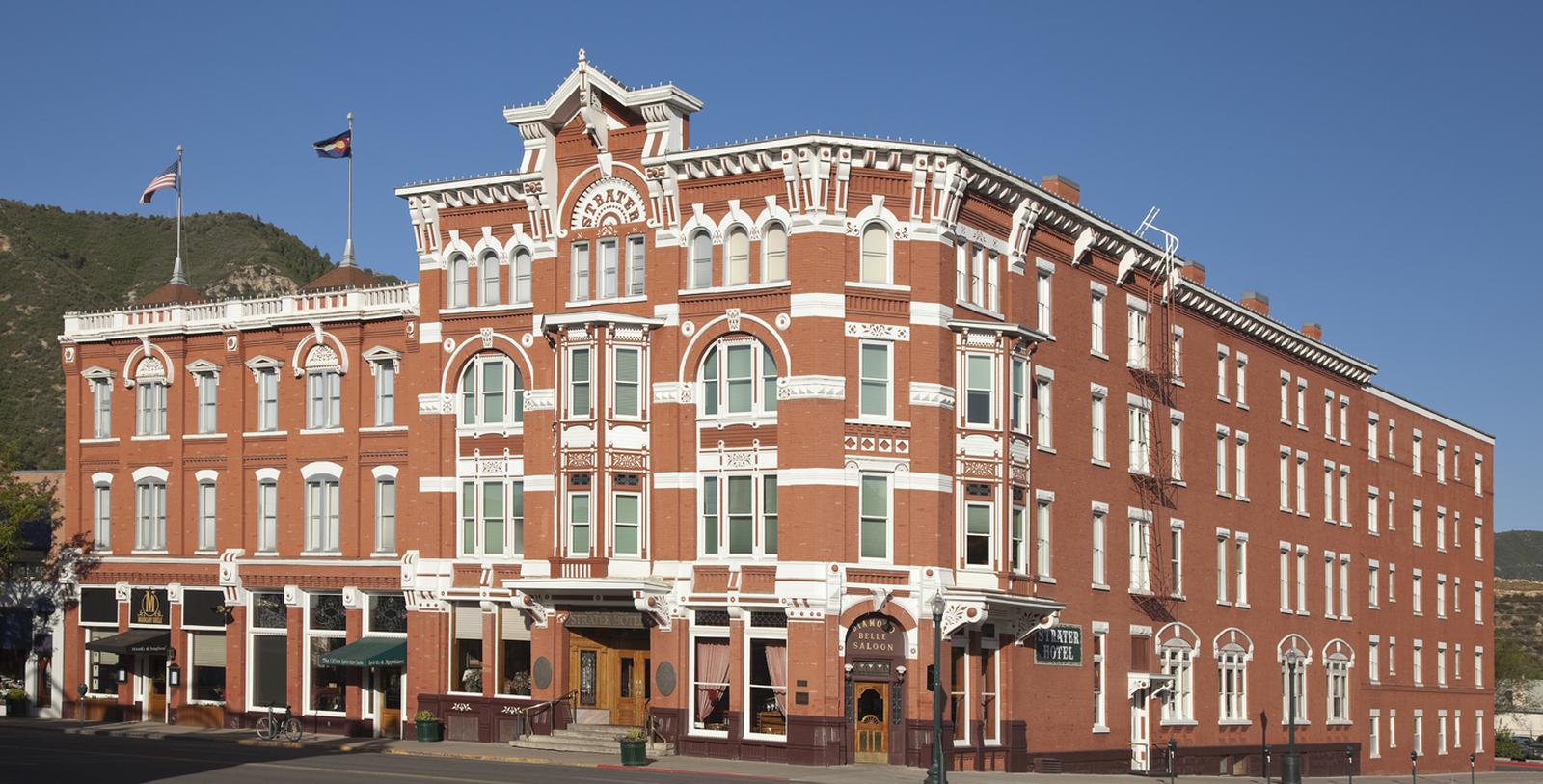Receive for Free - Discover & Explore eNewsletter monthly with advance notice of special offers, packages, and insider savings from 10% - 30% off Best Available Rates at selected hotels.
history
Discover The Strater Hotel, which was first built by Ohio pharmacist Henry Strater.
The Strater Hotel, a charter member of Historic Hotels of America since 1989, dates back to 1887
VIEW TIMELINEFamous Moments in History Happen at The Strater Hotel
Hear about Gerald Ford's stay at The Strater and John F. Kennedy's Strater Hotel campaign speech. Famous people like Will Rogers, Louis L'Amour, The Grateful Dead, the Apollo Astronauts, and more have stayed at The Strater. Even the 6th Transatlantic Treaty was also signed inside this magnificent building.
WATCH NOWA charter member of Historic Hotels of America, The Strater Hotel has stood as a renowned local landmark in downtown Durango for more than a century. This magnificent historic holiday destination debuted at the height of the Gilded Age, just as the specter of the Old West was starting to fade away into history. Durango itself was transiting into a modern American town, having operated as a remote mining camp for many years prior. Dozens of modern commercial enterprises opened in the heart of Durango, as did a wealth of brilliant residences that conveyed the latest architectural styles of the age. Amid this great cultural transformation arrived a pharmacist from Cleveland named Henry Strater, who saw great economic opportunity in Durango’s immediate future. Determining that a contemporary Durango required a grand hotel, Strater endeavored to develop such a business in the center of town. But the cost of construction proved to be too prohibitive, prompting the aspiring hotelier to form a partnership with his father, Frank Atone, and his two brothers. Together, they constructed a brilliant building that featured an eclectic mixture of Italian Romanesque, Renaissance Revival, and several other popular forms. The project was quite the undertaking, as it ultimately took some $70,000 to construct the new hotel. (For context, the family spent roughly $1.7 million in today’s currency.) Furthermore, the Straters had to use more than 376,000 red bricks just to create the exterior façade!
When the building finally opened as “The Strater Hotel” in 1887, it quickly endeared itself among the residents of Durango. Many even reserved guestrooms during the winter months when their homes became too cold. Interestingly, Henry Strater never desired to operate the business himself, deciding to lease it outright to H.L. Rice. Instead, Strater spent his time operating a pharmacy at the corner of the hotel, which occupied most of his time. Under Rice’s tutelage, The Strater Hotel emerged as the primary social gathering spot in all of Durango by the start of the 20th century. Many fell in love with the hotel’s stunning array of luxurious conveniences, which separated it from any other hotel for miles. Each guestroom, for instance, contained its own wood-burning stove and lavish décor. A few even contained pianos and washstands. But all was not well between Rice and Henry Strater. In a surprising twist, Strater had forgotten to exclude his own pharmacy from the lease, enabling Rice to levee high rent onto the business. The move infuriated Strater, who subsequently opened a second, rival hotel nearby called the “Columbian Hotel.” Both men were soon embroiled in a fierce rivalry that lasted for years. Yet, the lingering national effects of the Panic of 1893 eventually bankrupted each hotel. In the wake of the economic crisis, the Bank of Cleveland repossessed The Strater Hotel and sold it to Hattie Mashburn and Charles E. Stilwell. The two worked in concert to revitalize the ailing business, investing heavily into its growth. They made The Strater Hotel a destination for those who yearned for sophistication, offering programs that ranged from operatic performances to fine dining.
Stilwell and Mashburn remained in control over the building until 1926, when Earl A. Barker, Sr., acquired it with a group of fellow investors. Barker then set about preserving The Strater Hotel’s prestigious status that his predecessors had striven so hard to create. Barker and his family continued to operate The Strater Hotel for the remainder of the century, with his son, Earl Barker Jr., eventually taking over the business. Alongside his wife, Jentra, Earl Jr., made sure that the hotel’s historical charm was never lost. Illustrious guests continued to visit The Strater Hotel as well, including actor Will Rodgers, presidential candidate John F. Kennedy, and the original band members of The Grateful Dead. President Gerald Ford also stayed at the hotel twice and a few of the Apollo astronauts had traveled to the destination, too. Renowned author Louis L’Amour was known to live at the hotel, specifically residing in Room 222 for weeks at a time. In fact, L’Amour wrote most of his novels involving the fictional Sackett family inside The Strater Hotel! Several nations even meet at The Strater Hotel to discuss the “6th Trans-Atlantic Treaty,” in which the members agreed to establish new telephone lines between North America and Europe. Then in 1983, Roderick E. Barker—Earl’s son—assumed complete control over The Strater Hotel. Rod has since followed in his family footsteps, overseeing his own extensive series of renovations that have persevered the character of the business. Working with master woodworker Charles Schumacher, he redesigned many of the hotel’s iconic venues, including the Office Spiritorium, the Mahogany Grille Restaurant, and the Pullman Room. Today, The Strater Hotel continues to be among the best places to stay in all of Colorado.
-
About the Location +
The Strater Hotel is currently one of nine structures identified by the U.S. Department of the Interior to constitute the nucleus of Durango’s celebrated Main Avenue Historic District. The district itself currently resides in the center of the city, which was the most important settlement in southwestern Colorado for ages. Its history harkens back millennia though, as recent archeological evidence has revealed that people originally inhabited the region over 1,200 years ago! The area’s mild climate, rich soil, and active wildlife made it a paradise for the ancient Pueblo Indians that once occupied the space. Yet, the natives mysteriously disappeared by the time the Utes came several centuries later. The Utes subsequently used their vacated villages and built a vibrant cultural that defined the region. But a new migrant arrived in the middle of the 1800s that would alter its future for generations to come—Euro-American settlers. Inspired by tales of mineral deposits buried deep underground, those pioneers made the harrowing trek across the Great Plains in what became known as the “Colorado Gold Rush.” A small group of settlers specifically founded a rustic mining camp called “Animas City,” which gained its name from the nearby Animas River. (Animas is now a part of Durango, having been absorbed by the latter in 1948.) It was an incredibly diverse community, housing miners, farmers, and ranchers, as well as many other professions. A newspaper even opened inside Animas City shortly after its debut in 1876, as did a small U.S. Army base that guarded the routes into town.
In 1879, the Denver & Rio Grande Railway built a spur—the “San Juan Extension”—that bisected the local landscape. The new track was a means of supporting the various mining operations in the nearby hills, which had started to produce large quantities of gold and silver. The company then created a town along the railroad called “Durango” as a means of servicing the trains that operated in the area. Its founders specifically named the settlement after Durango, Mexico, after Colorado’s territorial governor—A.C. Hunt—commented that the two areas looked striking similar. (The word “Durango” originated from the Basque word “urango,” meaning “water town.”) Platting for Durango began in September of the following year, with town officials purchasing plots of land under various titles to conceal the railroad’s true intentions. The strategy also doubled as a cost-saving mechanism that allowed for the Denver & Rio Grande Railway to acquire land more cheaply. Many were surprised when the first locomotives passed through Animas City without even stopping! Durango—as well as the entirety of the San Juan Extension—were completed in 1881. At first, just a couple hundred residents chose to live within its boundaries. The town had also adopted a rough atmosphere that resembled the character of the Old American West. Yet, within a matter of years, that environment gave way to prosperous businesses, packed schools, and some of the finest Victorian homes in Colorado. The hope was for Durango to serve as an “up-to-date” community that offered only the finest aspects of civilization.
By the dawn of the 20th century, Durango possessed many traits of a modern city, including an electrical grid, a trolley line, and a three-story skyscraper that had its own elevator. At the center of this cultural renaissance was The Strater Hotel, which operated as the main social gathering spot in all of Durango. Smelting activities on the appropriately named “Smelter Mountain” continued to supply a source of labor well into the 1940s, too. The settlement also became a popular tourist destination, with the Denver & Rio Grande Railway transporting passengers to see the San Juan National Forest and Mesa Verde National Park (both of which opened during the first decade of the 1900s). Durango even hosted its own airport in the beginning of the 1950s! Today, Durango continues to be one of the most important communities in Colorado. It entertains hundreds of visitors every year, who are interested in experiencing its rich history, beautiful scenery, and frontier ambiance. Many others enjoy traveling out to see the national parks that still dot the surrounding countryside. Durango is home to a number of exciting cultural attractions as well, including the likes of the Animas Museum, the Durango Arts Center, and the Toh-Atin Gallery. Perhaps the greatest destination is the San Juan Extension, which operates today as the “Durango & Silverton Narrow Gauge Railroad. Countless passengers ride this historic railway, using its train cars to obtain spectacular views of the region. The U.S. Department of the Interior even identified the Durango & Silverton Narrow Gauge Railroad as a National Historic Landmark.
-
About the Architecture +
The Strater Hotel possesses a unique architectural style that can best be described as “eclectic.” Dating to the mid-19th and early 20th centuries, historians today consider “eclecticism” to be part of a much larger movement to fuse together a variety of historical designs. Earlier in the 1800s, architects—particularly those in Europe—decided to rely upon their own loose interpretations of historical architecture whenever they attempted to replicate it. Such a practice appeared within such styles as Gothic Revival, Italianate, and Second Empire architecture. But at the height of the Gilded Age, those architects decided to use historic architecture more literally when developing a building. A few architects went a step further by combining certain historical styles together to achieve something uniquely beautiful. And in some cases, those individuals felt inspired to add a new historical form onto a building that they were renovating—just like The Strater Hotel. Ultimately, the architects felt that joining such architectural forms together would give them a new avenue of expression that they otherwise did not have at the time. They also believed that they had stayed true to the earlier forms, having perfectly replicated whatever it was they wanted to mimic.
In Europe, this approach first appeared as a rehash of Gothic Revival-style known as “Collegiate Gothic.” The European architects then used such a mentality to influence the unfolding philosophies of both the Beaux-Arts school of design, as well as the emerging Renaissance Revival-style. Many architects in America followed suit, the most notable of which being Richard Morris Hunt and Charles Follen McKim. The American architects who embraced “eclecticism” were at first interested in the country’s colonial architecture. Much of the desire to return to the time period was born from the revived interest in American culture brought on by the Centennial Exposition of 1876. Pride in preserving the nation’s heritage inspired the architects to perfect the design principles of their colonial forefathers in new and intriguing ways. This interest gradually splintered into other revival styles, though, like Spanish Colonial and Tudor Revival. Some Americans even infused the approach with the popular Beaux-Arts aesthetics of France, such as Hunt and McKim. Yet, the birth of Modernism in the 1920s and 1930s eventually ended the worldwide love affair with “eclecticism,” for architects throughout the West became more enchanted with the ideas of modernity, technology, and progress.
-
Famous Historic Events +
Apollo 14 (1971): The Strater Hotel has a long history hosting various NASA astronauts, including the likes of Buzz Aldrin, Neil Armstrong, and Wally Schirra. Yet, in 1971, the hotel played host to Stuart A. Roosa—an astronaut with connections to Durango who participated in the Apollo 14 mission. Roosa was part of a three-man crew that launched from the John F. Kennedy Space Center on January 31, 1971. The entire mission took a total of nine days, with the space shuttle reaching the Moon at the beginning of February. Commander Alan Shephard and Lunar Module Pilot Edgar Mitchell set foot on the lunar surface, while Roosa—the command module pilot—remained in orbit. The astronauts eventually collected several moon rocks and conducted a few experiments, although they failed to reach their target destination of the Cone crater. (They did successfully visit their preliminary target, the Fra Mauro formations, which had been previously planned for Apollo 13.) Perhaps the most memorable event related to Apollo 14 involved Shephard hitting two golf balls from the Moon with a makeshift golf club. Meanwhile, Roosa carried out his own assigned experiments from inside the ship and photographed the Moon extensively. The three men were greeted as heroes upon their safe return to Earth later in the month. The residents of Durango specifically invited Roosa and his family to attend a grand celebration held in his honor, as the astronaut had been born in the city during the early 1930s. The Roosas arrived in Durango that July and were greeted by a crowd of people. They subsequently stayed inside The Strater Hotel and were given a tour of the city. The family also engaged in numerous activities, even receiving a special ride onboard the historic Durango-Silverton Narrow Gauge railroad. Afterward, the Roosas departed for a publicity tour of the nation.
-
Famous Historic Guests +
Louis L’Amour, renowned American novelist known for writing such works about the Old American West like Jubal Sackett, Hondo, and Silver Canyon.
Will Rogers, actor known for his roles in such films like Judge Priest, In Old Kentucky, and Steamboat Round the Bend.
Dan Fogelberg, musician known for his singles “Longer,” “Same Old Lang Syne,” and “Leader of the Band.”
Buzz Aldrin, astronaut part of the Apollo 11 mission who was one of the first two people to land on the Moon.
Neil Armstrong, commander of the Apollo 11 mission who was one of the first two people to land on the Moon.
Stuart Roosa, astronaut who participated in the Apollo 14 spaceflight mission to the Moon.
Wally Schirra, the only astronaut to participate in the Mercury, Gemini, and Apollo programs.
John Young, commander of the Apollo 16 spaceflight mission and participant of the Apollo 10 spaceflight mission.
The Grateful Dead, famous rock band that originally consisted of Jerry Garcia, Bob Weir, Mickey Hart, Phil Lesh, Bill Kreutzmann, and Ron McKernan.
John F. Kennedy, 35th President of the United States (1961 – 1963)
Gerald Ford, 38th President of the United States (1974 – 1977)







































